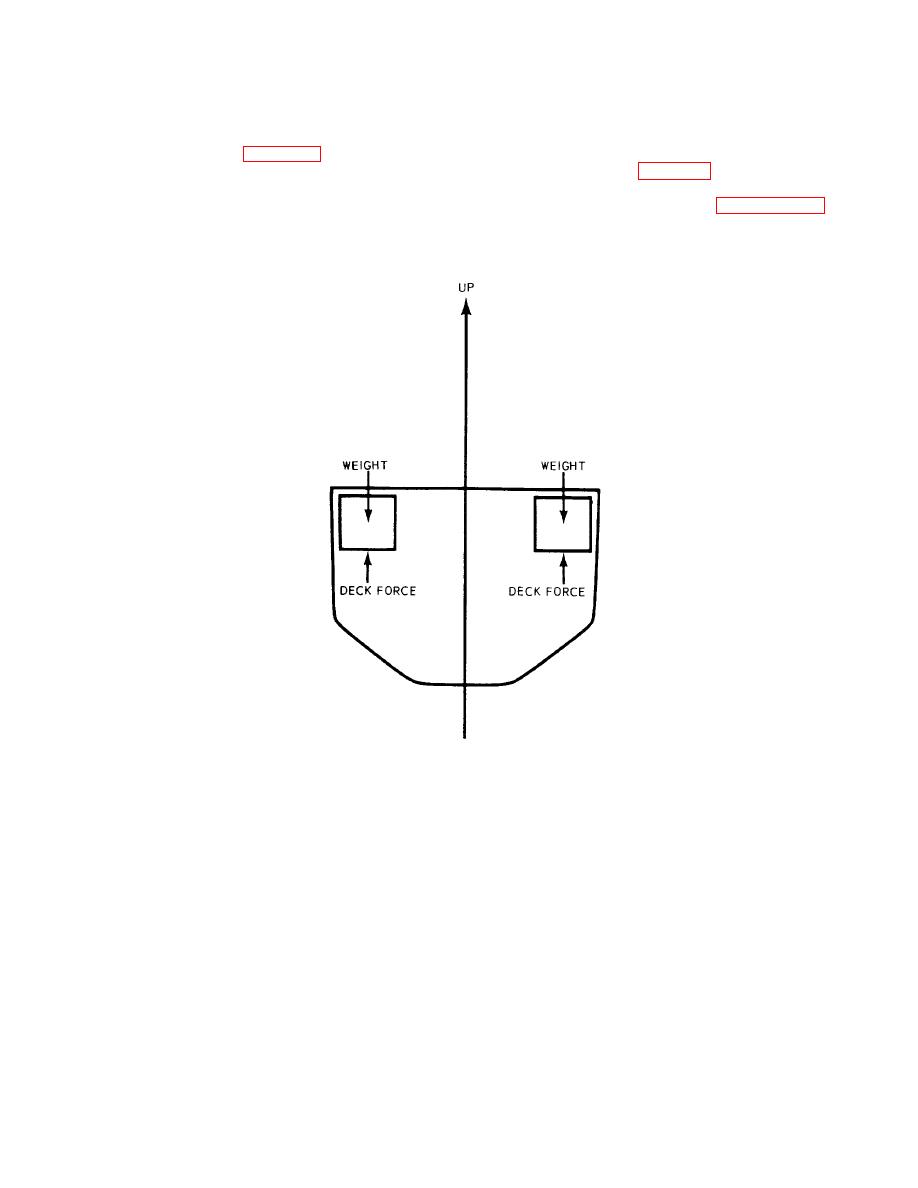
TM 55-607/NAVSEA OP 3221 Rev 2
a. Static loads are exerted by the cargo while the ship is at rest. For example, cargo stowed on a ship at rest or
underway in calm seas exerts only a downward vertical force equal to its weight, which is counteracted exactly by the
upward support of the deck. Figure 6-2 illustrates the forces that act on the cargo when ship motions are negligible. The
roll or pitch motion of the ship produces an inclination of the deck surface, as shown in figure 6-3. A portion of the item's
weight shifts across the deck and tends to cause sliding in the direction of deck inclination. This potential motion is
opposed by deck friction and the dunnaging structures. (Deck friction forces are discussed in paragraph 7-2b.) The
item's weight rests against the dunnaging. Forces (loads) are greatest when the roll or pitch inclination of' the ship
reaches its maximum. Static loads can be significant during heavy rolls or when a "tender" ship is inclined for a relatively
long period during recovery from a roll.
Figure 6-2. Static forces while ship is underway in calm seas.
6-2


